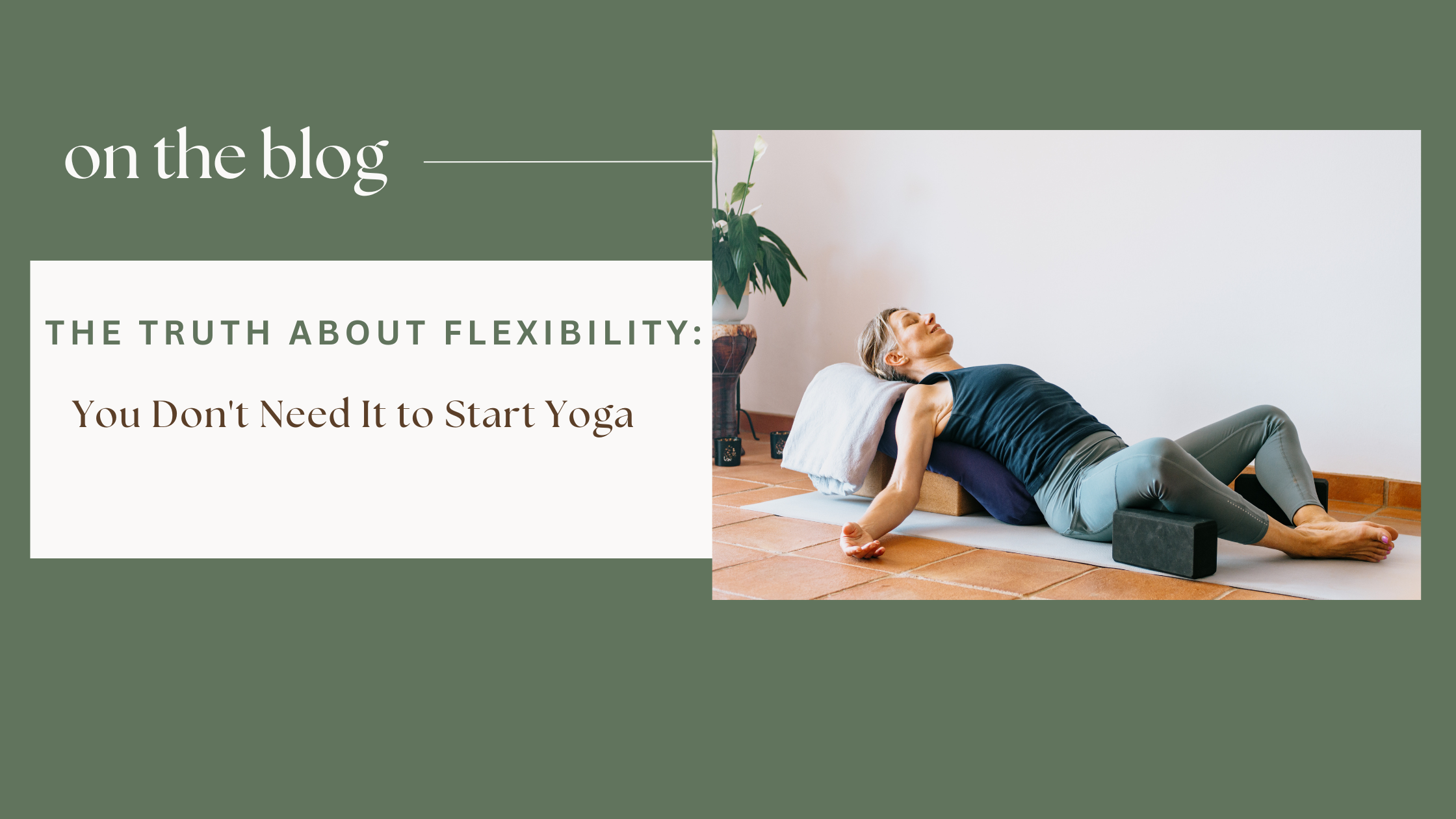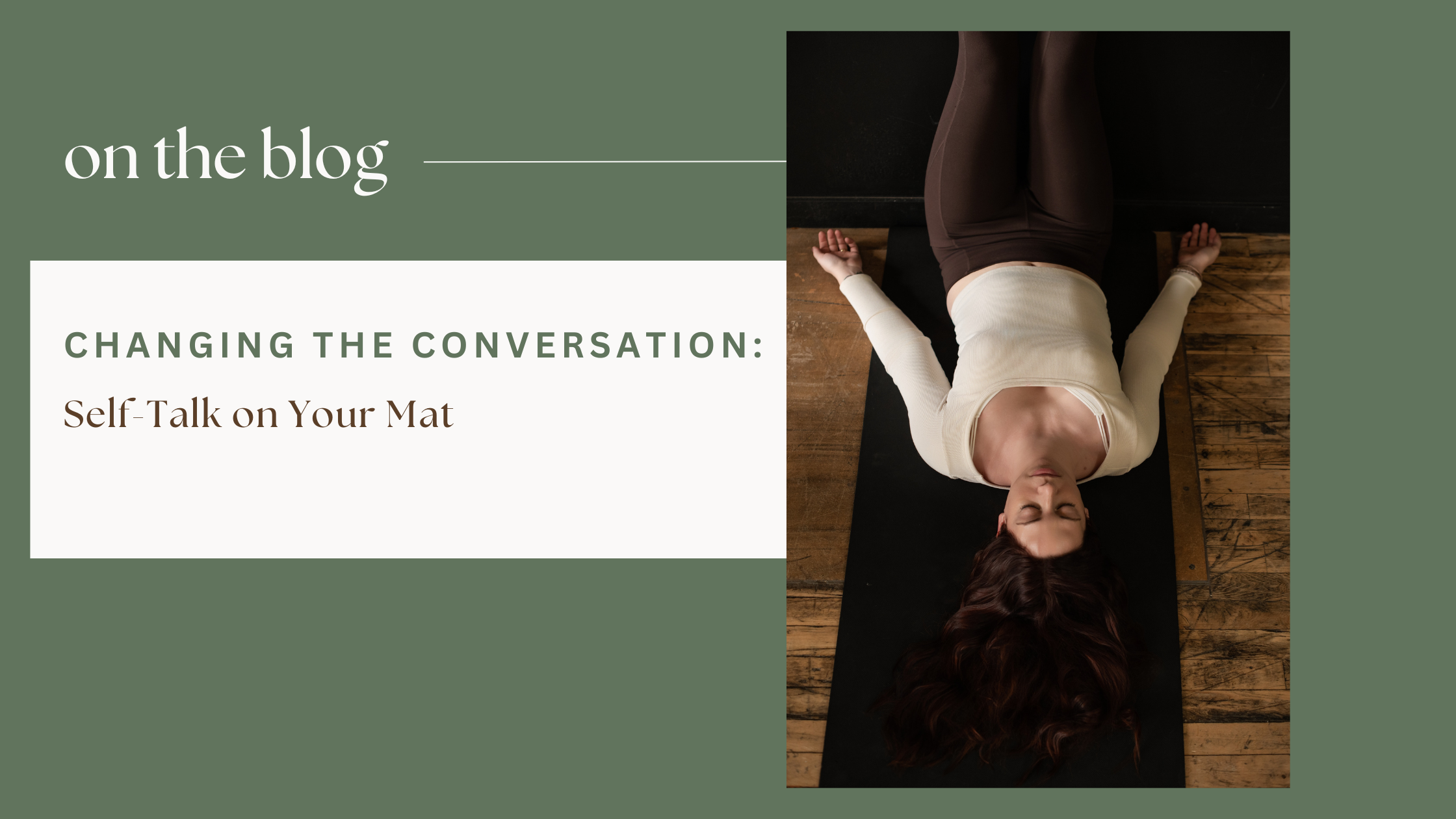Where we explore the beautiful, messy, and meaningful journey of caring for yourself - through movement, celebration, and moments.
Nurture Studios
The Truth About Flexibility: You Don't Need It to Start Yoga
"Why would I want to do yoga when I'm so inflexible?"
This question comes up regularly, and it reveals a common misconception. The idea that you need flexibility to start yoga is like thinking you need to be clean before taking a shower. You've got the whole process backwards.
You don't have to be good at something for it to be good for you. You don't have to be flexible to benefit from gentle movement. And you certainly don't need to prove anything before stepping onto a mat.
Here's the reality: your body deserves care regardless of its current state. Flexibility is a practical life skill, like bending down without pain, reaching overhead without strain, and moving through your day with ease rather than discomfort.
Yoga is the tool that helps you get to a life you want to live.
Why Flexibility Actually Matters
Inflexibility creates real limitations in daily life. When you can't turn your head fully to check your blind spot while driving, or when simple tasks like reaching for something cause strain, your world starts to shrink. Tight shoulders from desk work turn routine movements into sources of stress.
I remember when my husband started his yoga journey, he had a hard time putting on his socks without sitting down first.
Physical restrictions often lead to disconnection from your body. You start managing your way through each day rather than actually living it. Movement becomes something to avoid rather than enjoy.
Yoga as Your Practical Partner
Yoga approaches flexibility differently than you might expect. This practice works with your body as it is, meeting you at your current level of mobility and building from there.
Think of someone who spent decades in physically demanding work who has tight muscles, creaky joints, skeptical about anything that seems too gentle. Yet consistent yoga practice shows that strength and flexibility develop together through patient, gradual work.
The practice becomes a method for rediscovering what your body can do when treated with respect rather than force.
What Your Body Is Actually Asking For
Your tight hips and rounded shoulders are simply your body's current state. This is information, not judgment. Understanding what your body needs is straightforward:
Permission to move slowly and mindfully
Space to breathe deeply and regularly
Gentle encouragement to explore new ranges of motion
Acceptance of current limitations while working toward improvement
The Real Benefits of Flexibility
Flexibility gives you practical freedom. You can bend down and tie your shoes without planning the movement. You reach for something on a high shelf confidently. You get up from the floor without using your hands or grimacing.
Consider someone starting yoga later in life after a doctor mentions that flexibility and balance support independence as we age. The practice celebrates meaningful improvements of reduced pain, easier mornings, and restored confidence in your body's abilities.
Starting Where You Are
Your body has always been ready to be treated with respect and care. Yoga guides you toward greater flexibility through consistent, gradual practice. The practice honors your starting point while believing in your capacity to improve.
Yoga meets you in your current state of stiffness and provides a clear path toward greater ease. The practice respects your limitations while gently expanding them.
Your Next Step
Flexibility matters for your quality of life. Yoga is simply an effective, gentle method for developing it.
Come as you are: tight, uncertain, skeptical. Bring your limitations and your goals. The practice is designed to work with real bodies living real lives.
The most practical thing you can do is start exactly where you are.
Changing the Conversation: Self-Talk on Your Mat
You know that voice - the one that shows up the moment you step onto your mat. It might whisper things like "You should be able to do this by now" or "Everyone else looks so much more graceful." Maybe it gets louder when you need to rest, when you wobble, or when yesterday's easy pose feels impossible today.
Here's what I want you to know: that inner conversation happening during your practice? It's just as important as any pose you'll ever attempt. And just like your physical practice, it can be cultivated with patience, awareness, and a whole lot of compassion.
The way we speak to ourselves on the mat often reflects how we speak to ourselves everywhere else. So when we practice shifting that inner dialogue during yoga, we're actually training for life.
1. Notice Before You Judge (The Gentle Pause)
The first step isn't to stop the critical thoughts - that's asking too much and often makes them louder. Instead, we're going to practice noticing them before they spiral.
Here's how:
The moment you catch yourself in negative self-talk ("I'm so inflexible," "I'm the worst at balancing," "I shouldn't need to modify"), pause. Don't fight the thought. Don't judge yourself for having it. Just notice it like you'd notice a cloud passing overhead.
Try saying to yourself: "I notice I'm being critical right now." That's it. No fixing, no forcing positivity. Just awareness.
Why this works: When we name what's happening without judgment, we create space between ourselves and the thought. That space is where choice lives. In that pause, you remember: you are not your thoughts, and you get to decide which ones deserve your attention.
On the mat: Maybe you're in warrior three and you wobble. Instead of immediately thinking "I'm terrible at this," try: "I notice I'm being hard on myself about wobbling. Wobbling is just information - my body is finding its balance."
2. Talk to Yourself Like Your Best Friend (The Compassion Flip)
Here's a question that changes everything: If your dearest friend was struggling with the same thing you're struggling with, what would you say to them?
I'm willing to bet it wouldn't be "You should be better at this by now" or "You're so weak." You'd probably offer understanding, encouragement, maybe even remind them that growth takes time.
Here's how:
When you catch yourself being self-critical, pause and ask: "What would I say to a friend in this situation?" Then say exactly that - to yourself.
Replace harsh judgments with curious observations:
Instead of "I'm so stiff today" → "My body feels different today, and that's okay"
Instead of "I can't even hold this pose" → "I'm learning what my body needs right now"
Instead of "Everyone else is better than me" → "Everyone's practice looks different, and that's beautiful"
Why this works: We often have more compassion for others than ourselves. This practice helps us extend that same kindness inward. It's not about lying to yourself or forcing fake positivity - it's about offering yourself the basic respect and understanding you'd give anyone you care about.
On the mat: You're in a flow sequence and you lose your breath, feel uncoordinated. Instead of mental criticism, try: "Hey, it's okay. This is challenging today, and I'm doing my best. That's actually really brave."
3. Reframe the Story (The Empowering Narrative)
Our brains love stories, and we're constantly telling ourselves stories about what things mean. "I fell out of tree pose" becomes "I'm bad at yoga." "I needed to rest in child's pose" becomes "I'm weak."
But here's the beautiful thing about stories - you get to choose which one you tell.
Here's how:
When you notice yourself creating a negative story about your practice, pause and ask: "What else could this mean? What's another way to look at this?"
Some reframes to try:
"I'm not flexible enough" → "I'm exploring my edge and learning about my body"
"I had to modify" → "I listened to my body's wisdom and honored what it needed"
"I couldn't quiet my mind" → "I practiced noticing my thoughts without being controlled by them"
"I cried during class" → "I created space for my emotions and let them move through me"
Why this works: When we consciously choose empowering narratives, we're not denying reality - we're choosing to focus on the parts of our experience that help us grow. We're training our brains to look for evidence of our strength, wisdom, and courage instead of our perceived shortcomings.
On the mat: You're in pigeon pose and it feels intense emotionally. Instead of "I'm being too sensitive" or "I should be able to handle this," try: "My body is releasing what it's been holding. This discomfort is part of my healing. I'm brave for staying present with this."
The Ripple Effect
Here's the beautiful thing about practicing better self-talk during yoga: it doesn't stay on the mat. When you train yourself to speak with kindness and curiosity to yourself in one area of your life, it starts showing up everywhere.
That critical voice that used to take over during challenging poses? It gets quieter in traffic, at work, in difficult conversations. That compassionate inner friend you're cultivating? They start showing up when you spill coffee on your shirt, when you make a mistake, when life feels hard.
Remember This
Changing your inner dialogue isn't about perfection - it's about practice. Some days you'll catch the critical thoughts early. Other days they'll run the show for a while before you remember you have a choice. Both are completely normal parts of the process.
Your yoga practice is already teaching you so much about strength, flexibility, and balance. Now you can let it teach you about self-compassion too.
The next time you step onto your mat, bring this awareness with you: you are not just practicing poses, you're practicing a way of being with yourself. Make it a kind one.
Your inner conversation matters. You deserve to hear love in your own voice.


